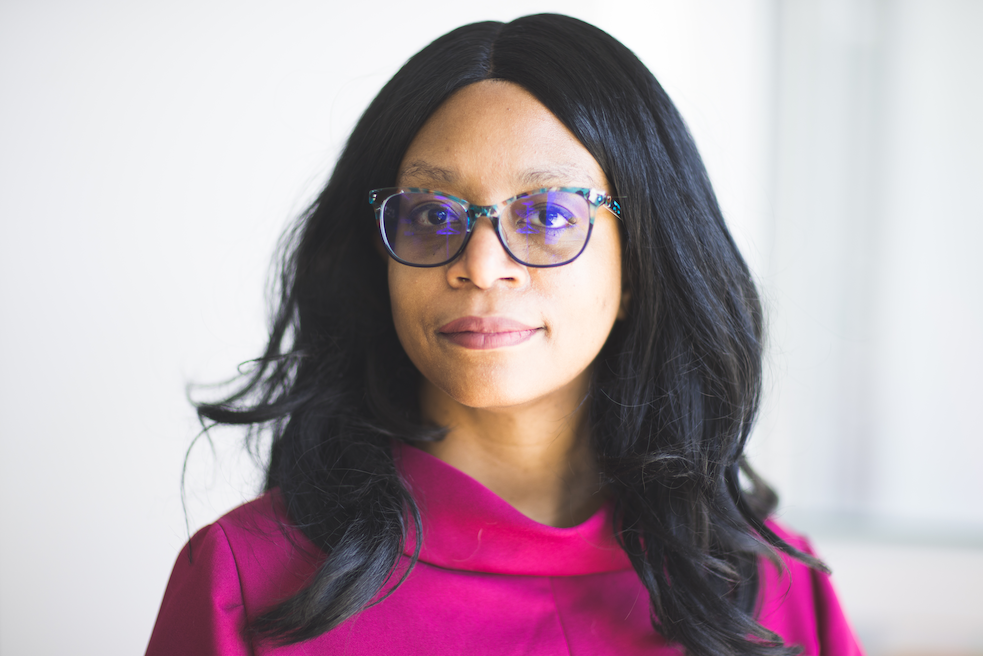
Associate Dean of Libraries for Collections & Content Strategies Qiana Johnson
The Libraries recently hosted an open panel called "Sparking Conversations: University Presses and the State of Scholarly Publishing.” Guest speakers included university press directors Amy Brand from MIT, Christie Henry '91 from Princeton, and Charles Wilkinson from the University of Michigan, giants in scholarly publishing. They shared challenges and opportunities arising from the shifting scholarly publishing landscape and ways they are actively transforming the field and championing action within their institutions and the scholarly ecosystem.
To illuminate the topic's significance, we asked Qiana Johnson, Associate Dean of Libraries for Collections & Content Strategies, to share further insights about this sector.
****
Who’s responsible for scholarly publishing? Trying to get a firm answer to who supports scholarly publishing often feels like a game of hot potato. Depending on who you ask, you will probably get a different answer. That answer will also differ depending on how you define “support.”
Is it about funding research itself? Is it the selection of research, the addition of an editorial process, and then publishing the work? Or is it about academic libraries purchasing already-published scholarship? Ultimately, there is a lively debate about whether research funders, academic institutions, or individual researchers and readers should bear the costs of sharing scholarly research.
First, let’s define scholarly publishing. Scholarly publishing results from research and exists to
- describe the research
- assess its credibility and reproducibility
- amplify it through multiple channels
- preserve the work for future use.
Among those supporting scholarly publishing today, university presses and libraries are two long-standing partners. University presses champion scholarly publishing by identifying scholarship, putting it through the editorial process, and publishing it. Historically, academic libraries have paid to acquire those publications to make them available to their communities, including larger national and sometimes international research communities. Libraries have been and continue to be the major buyers of works published by university presses.
Despite that symbiotic support system, both institutional bodies have felt the pressures of a shifting publishing landscape. Much of that pressure is financial, as over the past several decades, academic library buying power has decreased. Further, their budgets have not kept pace with the volume of resources available or the annual inflationary increases attached to journal subscriptions. University presses are thus competing with other publishers for fewer dollars from libraries. These economic pressures have led to the merger of some university presses and the closing of others.
However, scholarly publishing was never solely in the purview of university presses. Scholarly societies have played, and continue to play, an essential role in scholarly publishing, and for-profit publishers have emerged as a growing force in recent decades. University presses, libraries, scholarly societies, and for-profit publishers are just some of the various entities with a vested interest in scholarly content, alongside funding agencies, national governments, and private consumers of academic research. No one partner in the scholarly publishing landscape can or should control the entirety of this ecosystem.
Another factor in the shifting landscape relates to changing models for research outputs and dissemination. Major funding agencies are increasingly mandating public access to research data and source code, and many colleges and universities have policies promoting more open dissemination of that published scholarship. These policies have accelerated since the release of the 2022 “Nelson Memo” from the U.S. government mandating public access to federally-funded research. The Memo doesn’t mandate that federally-funded research should appear in a particular type of open-access publication - for example, gold or hybrid - just that it be publicly accessible.
Another important funder mandate is “Plan S,” an initiative of cOAlition S, “a group of national research funders, European and international organizations, and charitable foundations.” Where the Nelson Memo leans strongly toward depositing articles into designated repositories, Plan S calls for publishing in compliant open-access journals or platforms.
cOAlition S is pushing for more equitable practices than current scholarly publishing models. Its October 2023 report, “Towards Responsible Publishing: A Proposal from cOAlition S,” highlights the inequities inherent in the field and the harms of coupling editorial gatekeeping with career incentives. Recognizing these challenges, cOAlition S proposes a community-based, scholarly communication system.
To evolve the sector’s practices is a community endeavor. Different members and entities in the scholarly publishing community will have strengths that others won’t. No one piece of the whole can or should monopolize the scholarly process. However, scholarly publishing can achieve and maintain sustainability through its community’s diverse strengths. Opportunities for future and ongoing conversations include:
- identifying and supporting the particular strengths different publishers bring to the ecosystem
- shaping what role universities and funders play in shaping the scholarly publishing landscape
- considering how libraries can be partners in acquiring and preserving scholarly output in this new ecosystem
- and determining how libraries can support and shape better and more equitable access to the scholarly record.